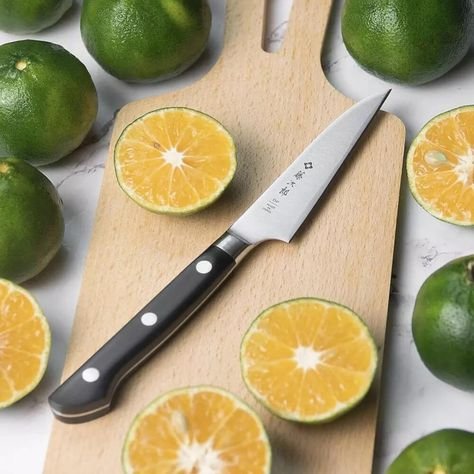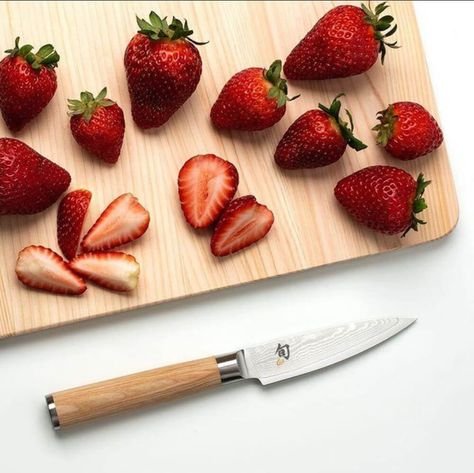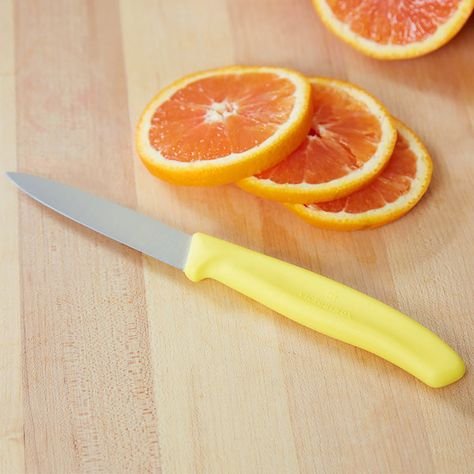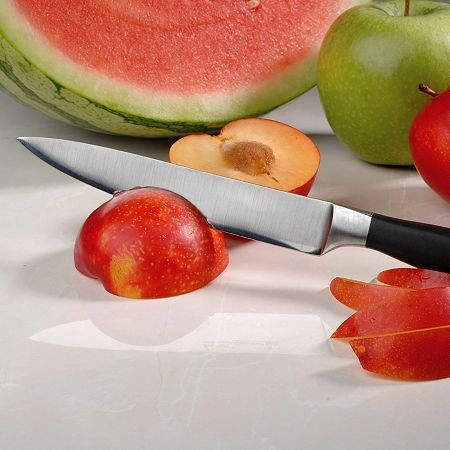Introduction
A Culinary chief In the world of culinary trades, perfection is crucial. One of the most essential tools that contribute to this perfection is the fruit cutter. A fruit cutter, specifically designed for slicing, shelling, and cutting fruits, is a chief in both professional kitchens and home kitchens. This composition explores the colorful aspects of Fruit knife, including their design, uses, accoutrements , conservation, and how to choose the right bone.
Fruit Knife
A Fruit knife is a small, sharp cutter designed for cutting fruits. It’s characterized by its short, thin blade and refocused tip, which allows for intricate and precise cuts.

Unlike larger shanks
That might be clumsy for delicate tasks, a Fruit knife offers the control and project demanded to handle fruits with care. Design and Features The design of a fruit cutter is what sets it piecemeal from other shanks. Then are some of the key features Blade The blade of a fruit cutter is generally between 3 to 4 elevation long. It’s thin and sharp, allowing for clean cuts through the delicate meat of fruits without crushing or bruising them.
The blade may be straight or slightly twisted, depending on the cutter’s intended use. Handle The handle of a Fruit knife is designed for a comfortable grip. It’s frequently made from accoutrements like plastic, wood, or pristine sword. The handle should be ergonomically shaped to fit comfortably in the hand, allowing for precise control. Weight A fruit cutter is featherlight, making it easy to handle for extended ages. The balance between the blade and the handle is pivotal for maintaining control during intricate tasks.

Types of Fruit Knife
Come in colorful types, each designed for specific tasks. Then are some of the most common types shearing Knife The shearing cutter is the most protean type of fruit cutter. It has a short, straight blade that’s perfect for shelling, slicing, and coring fruits. Its compact size makes it easy to handle and control. Serrated Knife A serrated fruit cutter has a blade with small, jagged edges.
This design is ideal for cutting through Fruit knife with tough skins, similar as tomatoes, citrus fruits, and melons. The saw-toothed edges grip the skin, allowing for a clean cut without squashing the fruit. raspberry’s Beak Knife Also known as a tournée cutter, the raspberry’s beak cutter has a twisted blade that resembles a raspberry’s beak. This shape is perfect for shelling and shaping round fruits like apples and pears. Fruit knife

The twisted blade allows for smooth, controlled movements. Utility Knife A mileage cutter is slightly larger than a shearing cutter and is useful for cutting larger fruits or making more substantial cuts. It can handle a variety of tasks, from slicing to dicing.
Uses of Fruit Knife
There are incredibly protean and can be used for a wide range of tasks. Then are some common uses shelling shelling fruits like apples, pears, and kiwis is a breath with a fruit cutter. The sharp blade allows for thin, precise cuts, removing just the skin without wasting any of the fruit.
Slicing A fruit cutter is perfect for slicing fruits into thin, indeed pieces. Whether you are preparing fruit for a salad, a trim, or a catea fruit cutter ensures clean, invariant slices. Hulling and Coring Removing the core from apples or shelling strawberries can be done snappily and efficiently with a Fruit knife.

The pointed tip is perfect for these delicate tasks. ornamental Cuts For those who enjoy creating intricate fruit displays, a fruit cutter is essential. It allows for precise, ornamental cuts, making it easy to produce beautiful fruit arrangements.
Segmenting Citrus
Segmenting citrus fruits, similar as oranges and grapefruits, is made easier with a fruit cutter. The sharp blade cuts through the membranes fairly, leaving before perfect, juicy parts. Accoutrements and Construction The accoutrements used in the construction of a fruit cutter play a pivotal part in its performance and continuity.
Stainless Steel
Stainless sword is a popular choice for fruit cutter blades due to its continuity, erosion resistance, and ease of conservation. It maintains a sharp edge and is less prone to rust compared to other essence. Carbon Steel Carbon sword blades are known for their sharpness and edge retention. still, they bear further conservation to help rust and erosion.

Carbon sword shanksneed to be gutted and dried incontinently after use. Ceramic Ceramic blades are extremely sharp and featherlight. They retain their edge for a long time and are resistant to rust. still, ceramic blades can be brittle and prone to dicing if not handled precisely. Plastic Some Fruit knife
have plastic blades, which are safe for children to use. While they may not be as sharp as essence or ceramic blades, they’re effective for soft fruits and are easy to clean.
Choosing the Right Fruit Knife
Opting the right fruit cutter involves considering several factors to insure it meets your specific requirements. Then are some crucial considerations Purpose Determine what tasks you’ll primarily use the cutterfor.However, a shearing cutter is a protean choice, If you need a cutter for general fruit medication. For tougher-bearded fruits, a saw-toothed cutter may be more suitable. Blade Material Consider the blade material grounded on your preferences and conservation routine.

While carbon sword requires further care but offers superior sharpness. Handle Comfort The handle should fit comfortably in your hand. Look for an ergonomic design that provides a secure grip. The handle material should also be durable and easy to clean. stropping Regularly edge the blade to maintain its sharpness. Use a honing rod for minor touch- ups and a stropping gravestone for more significant stropping. Storage Store the cutter in a cutter block, a glamorous strip, or a defensive jacket to help damage to the blade and insure safety.


